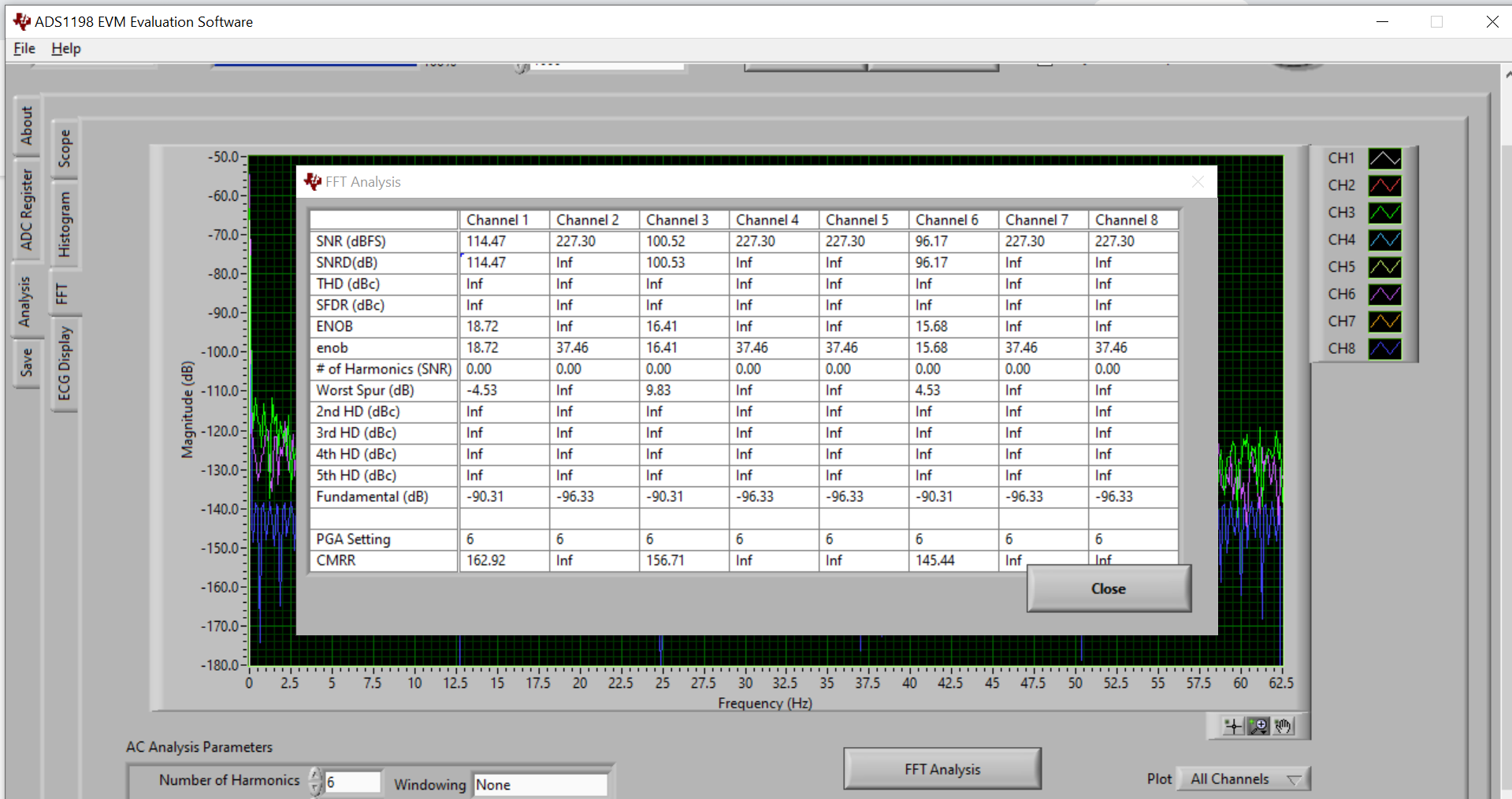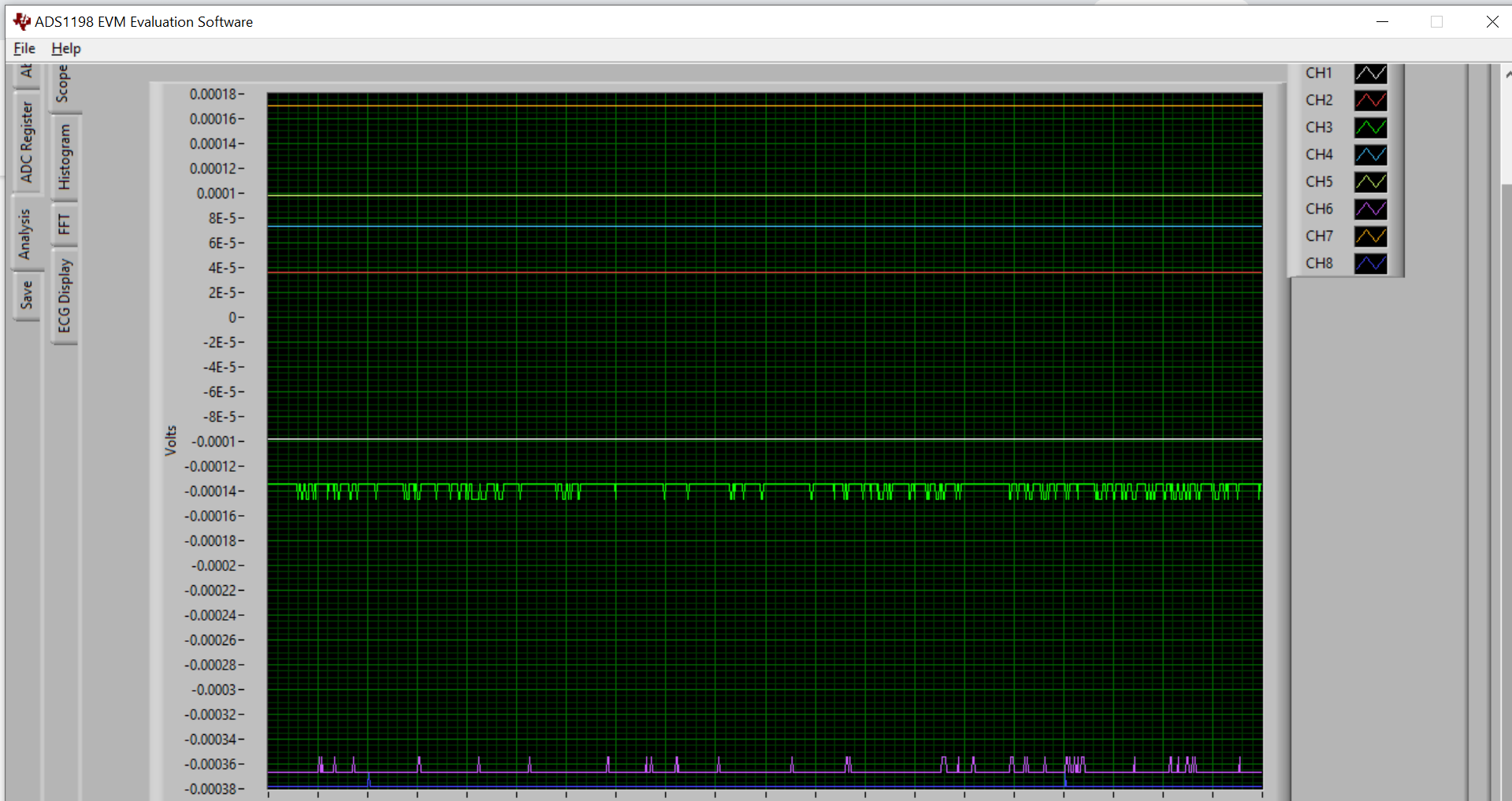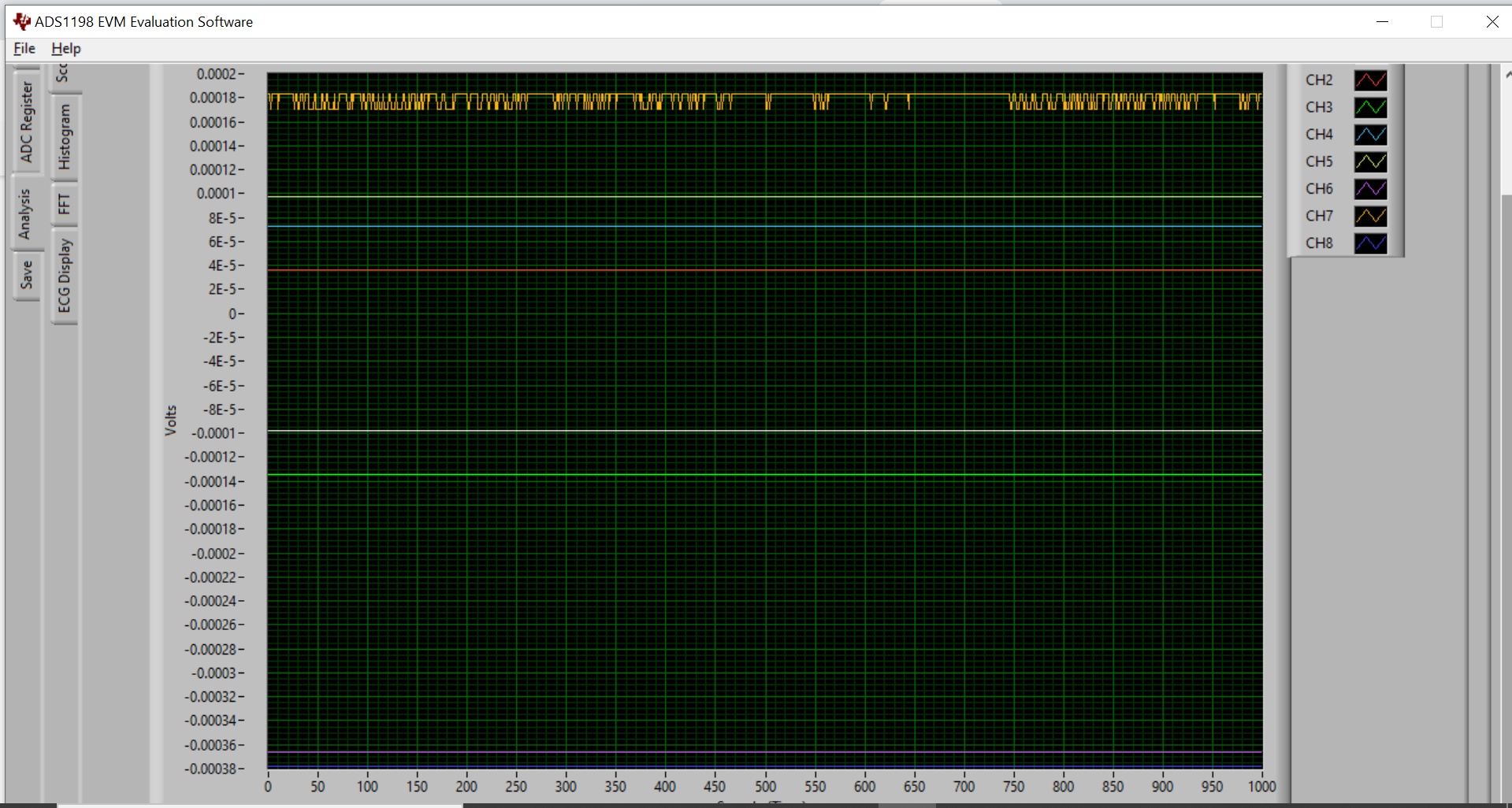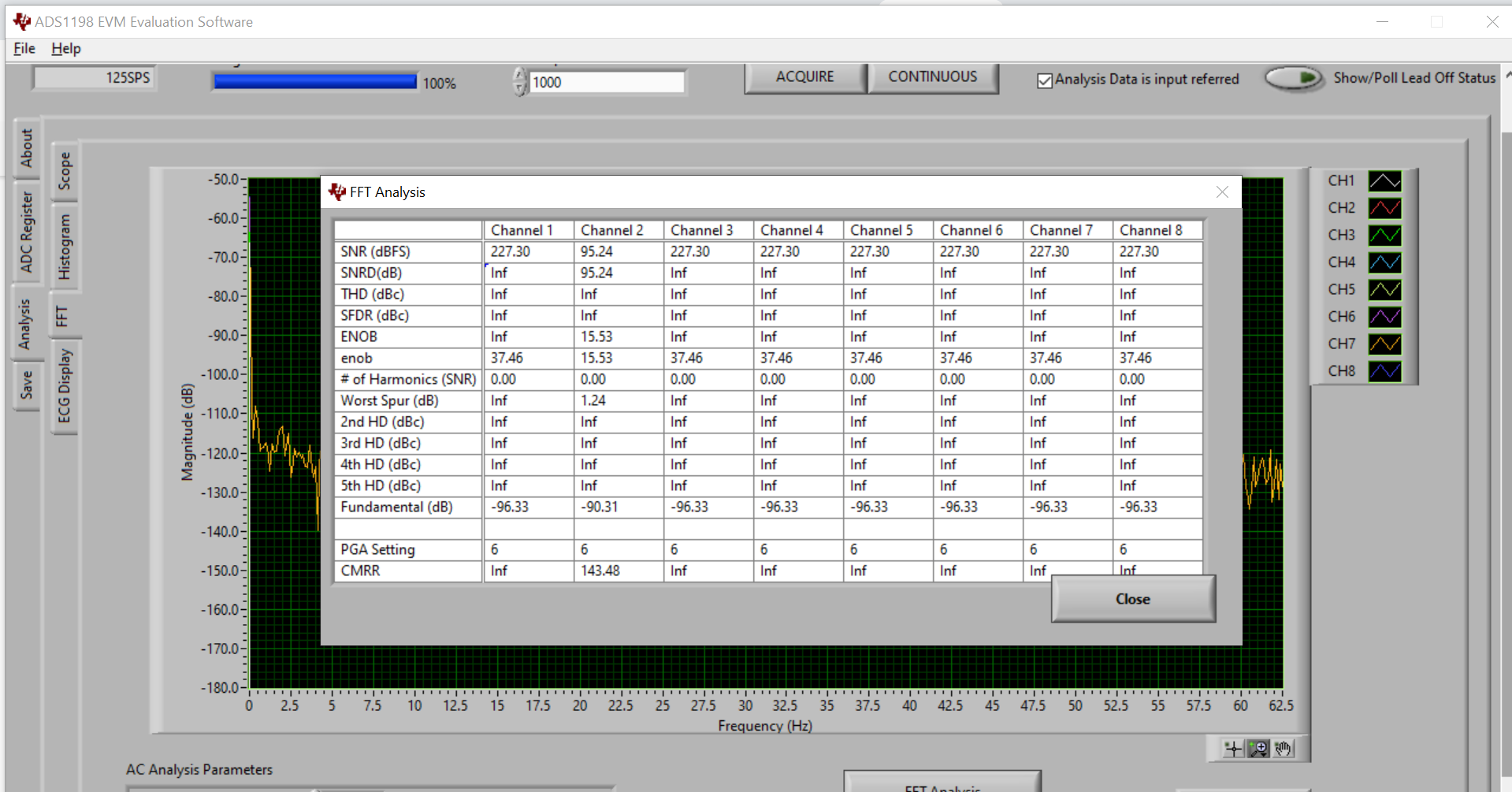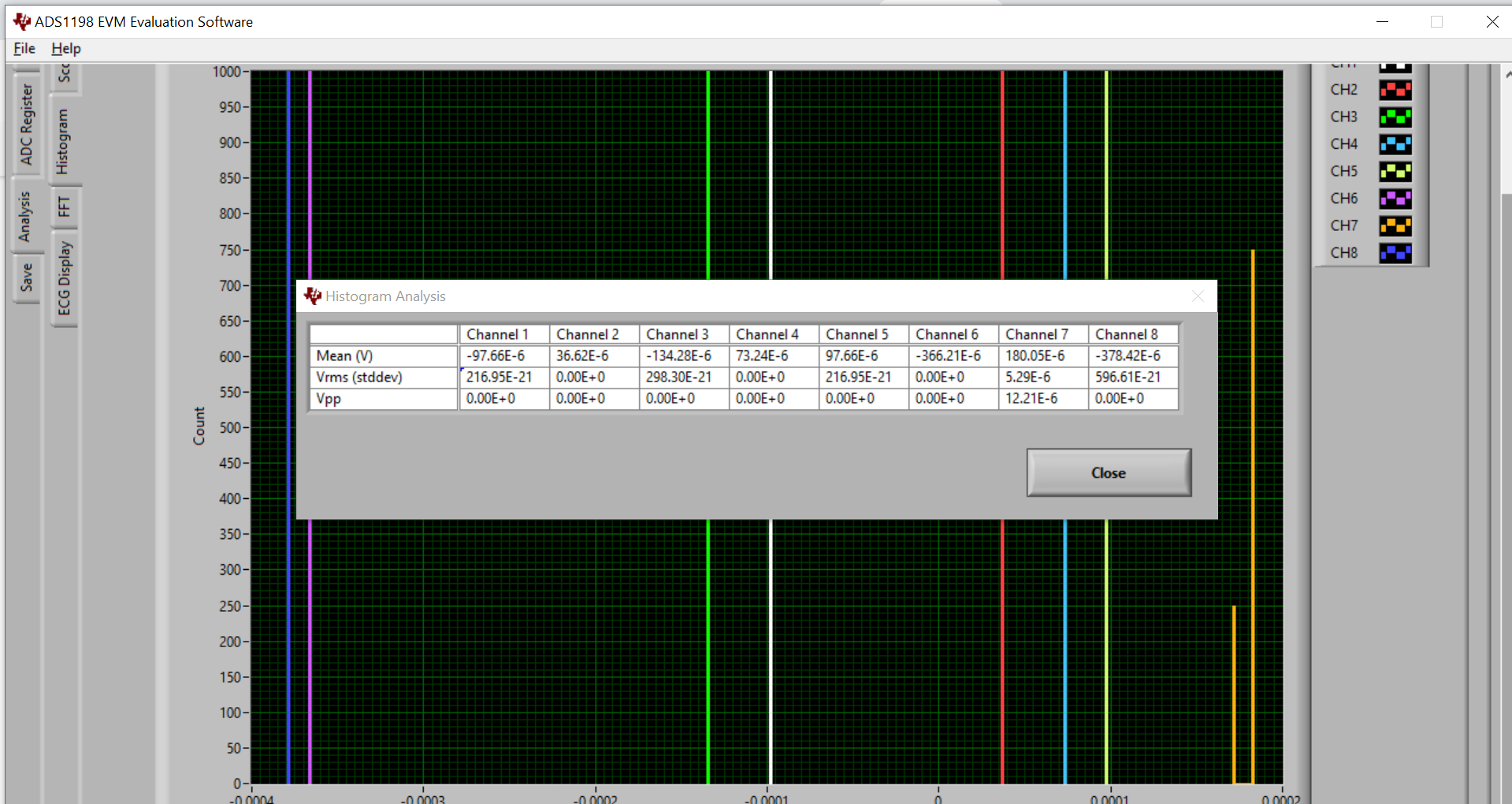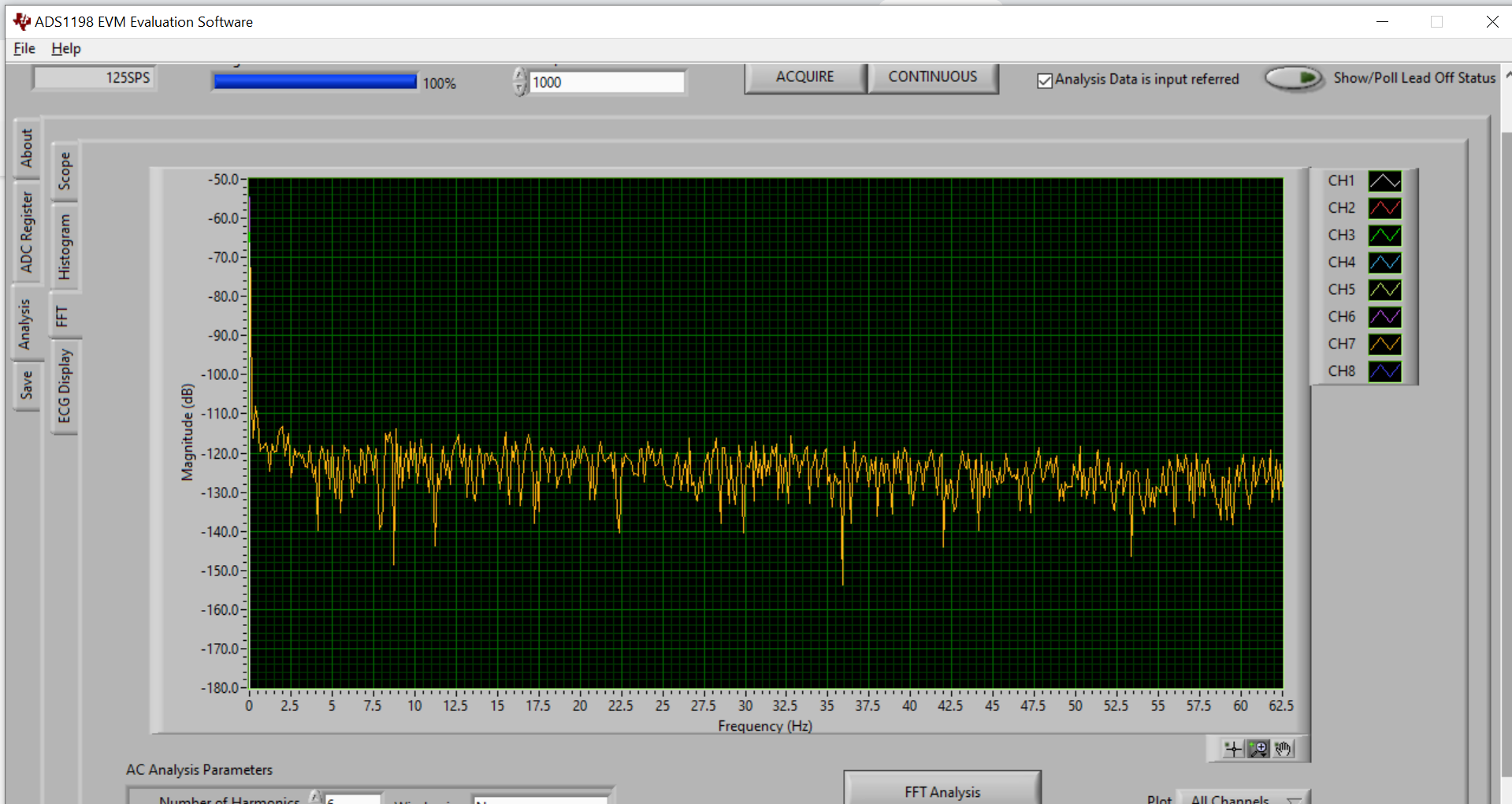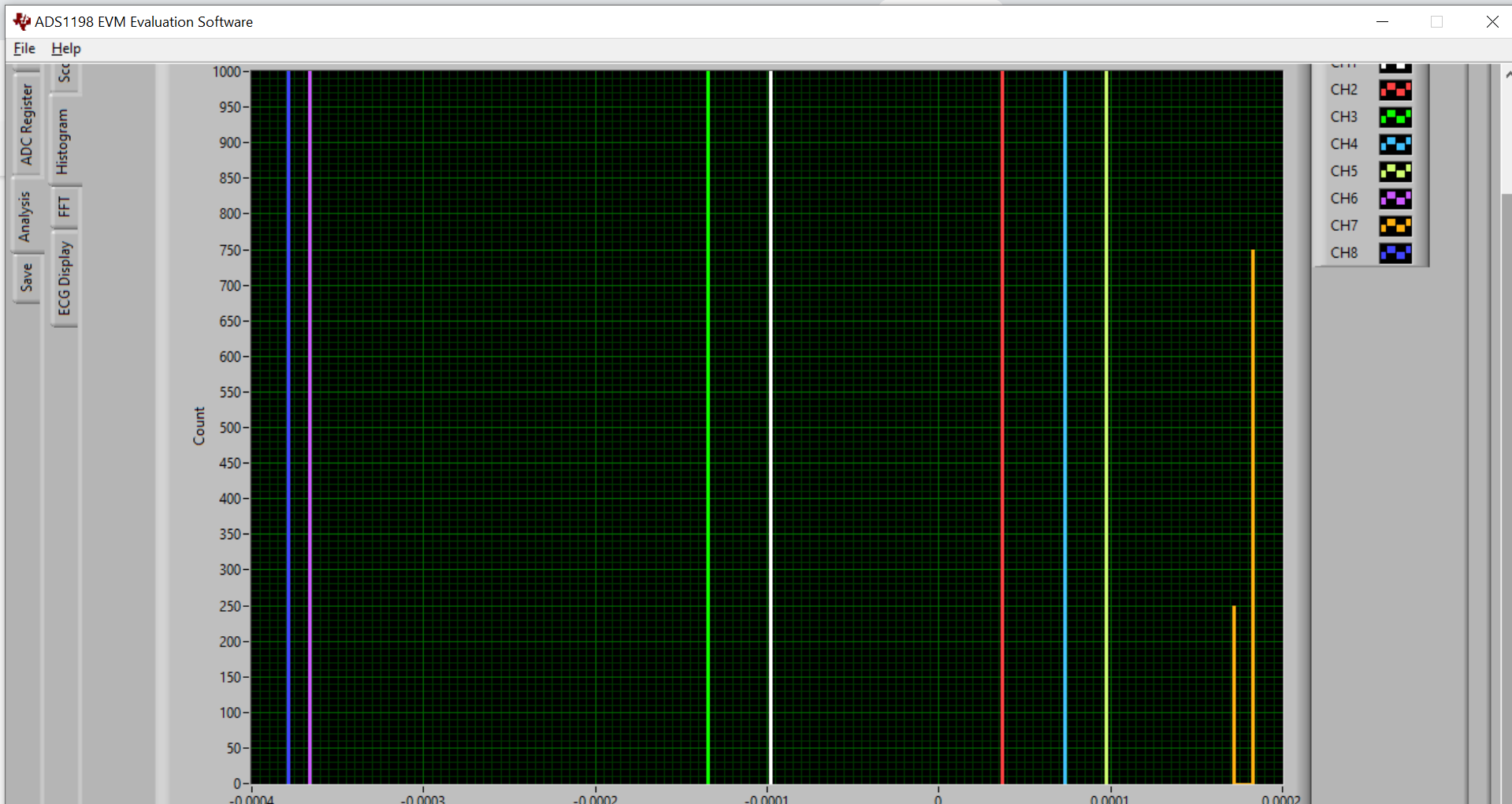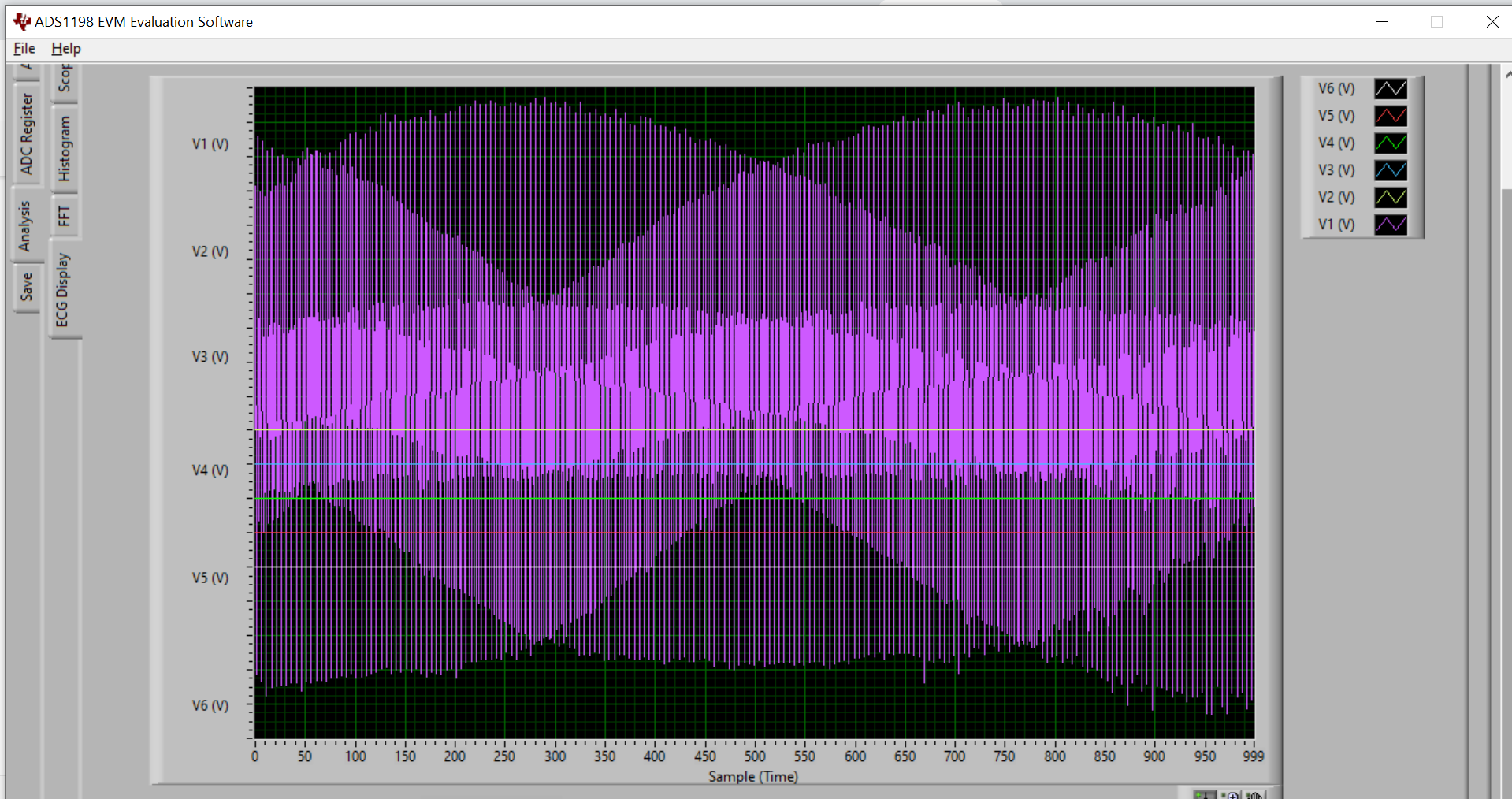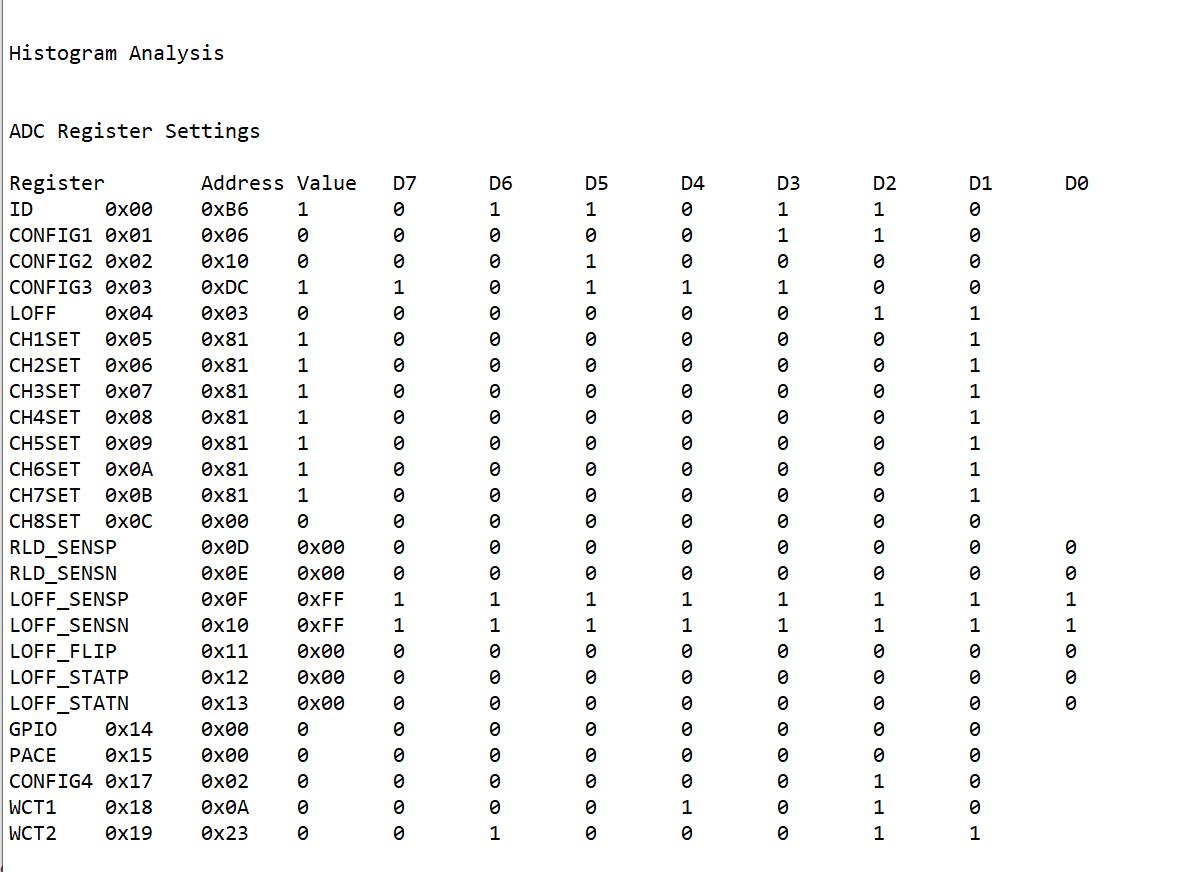Other Parts Discussed in Thread: ADS1198
Tool/software: TI C/C++ Compiler
Hi,
Firstly thanks for taking the time to read my post. I had just bought the ADS198ECH-FE EVA kit and had successfully gotten some good EMG results. However currently, I am getting a lot of random noises in my waveforms. I tried resetting the software settings and acquiring data with all the inputs shorted. I was supposed to get signals in a straight line with no waveforms but instead got the signal below, which shows a lot of random noises. Furthermore, the FFT analysis seems to show that the CMRR is infinite for some channels, which is really wrong. I suspect there is a malfunction on my device. Can you please help me check what the problem may be? Thanks once again.


